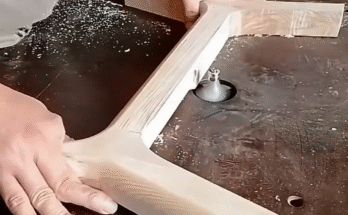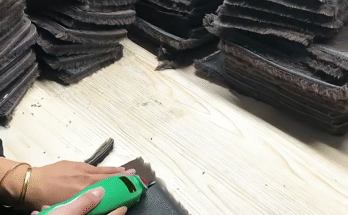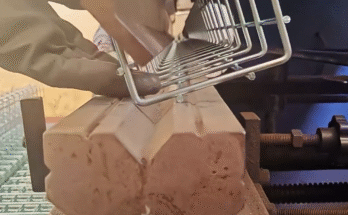The “thickening process of the bottom of a bucket” typically refers to manufacturing techniques used to create a more robust and durable base for plastic or metal buckets, often to withstand heavy loads, abrasion, or repeated impact. This process can vary significantly depending on the material (plastic or metal) and the specific manufacturing method (e.g., injection molding for plastic, deep drawing for metal).
Here’s a general step-by-step breakdown, focusing on common industrial practices:
For Plastic Buckets (Injection Molding)
Plastic buckets are most commonly made using injection molding. The thickening of the bottom is achieved by designing the mold cavity to have a greater thickness in that area.
Step 1: Mold Design and Creation
- Conceptual Design: Engineers design the bucket, specifying the desired wall thickness for the sides and, crucially, the increased thickness for the bottom to ensure durability. This often involves Finite Element Analysis (FEA) to simulate stress points.
- Mold Tooling: A precision mold is manufactured, typically from steel. The mold consists of two main halves (core and cavity) that, when closed, form the shape of the bucket. The cavity for the bottom section is precisely machined to be thicker than the side walls.
- Gate Location: The injection gate (where molten plastic enters the mold) is often strategically placed at the center of the bucket’s bottom. This allows for even flow and pressure distribution, which is critical for filling the thicker section without voids or sink marks.
Step 2: Material Preparation
- Resin Selection: Appropriate plastic resin pellets (e.g., High-Density Polyethylene (HDPE), Polypropylene (PP)) are selected based on the bucket’s intended use (e.g., food grade, chemical resistance, impact strength).
- Drying (if necessary): Some resins are hygroscopic and must be dried in a hopper dryer to remove moisture, preventing defects like splay marks or brittleness in the final product.
Step 3: Injection Molding Cycle
- Plasticization: The resin pellets are fed from a hopper into a heated barrel containing a rotating screw. The screw melts and mixes the plastic, conveying it towards the mold.
- Injection: Once a sufficient amount of molten plastic (a “shot”) is accumulated, the screw moves forward, injecting the molten plastic under high pressure into the closed mold cavity. The design of the mold ensures that the thicker bottom section fills completely.
- Packing/Holding: After the mold is filled, a holding pressure is maintained for a short period. This “packing” phase pushes more plastic into the mold as the material cools and shrinks, compensating for shrinkage and ensuring the thicker bottom section is dense and free of voids. This is crucial for achieving the desired thickness and strength.
- Cooling: Cooling channels within the mold circulate water or oil to rapidly cool the plastic, solidifying the bucket’s shape. The cooling time is longer for thicker sections, like the bottom, to prevent warping and ensure proper solidification.
- Ejection: Once sufficiently cooled and rigid, the mold opens, and ejector pins push the finished bucket out of the cavity.
Step 4: Post-Molding (Optional)
- Trimming: Any small plastic remnants (gates, flash) are trimmed off.
- Quality Control: Buckets are inspected for defects, proper dimensions, and the integrity of the thickened bottom.
For Metal Buckets (Deep Drawing)
Metal buckets, often made from steel or aluminum, can be manufactured using a process called deep drawing, where a flat sheet of metal is formed into a hollow shape.
Step 1: Material Preparation
- Sheet Metal Selection: A flat sheet of metal (e.g., steel, aluminum) of appropriate gauge and quality is chosen.
- Blanking: A circular blank (disc) is cut from the sheet metal, which will form the entire bucket.
Step 2: Deep Drawing Process
- Lubrication: The metal blank is lubricated to reduce friction during drawing and prevent tearing.
- Drawing Die Setup: A punch and die set are used. The punch presses the blank into the die cavity.
- Initial Draw: The blank is pressed into the die, forming a shallow cup.
- Redrawing (for thickening): To achieve a thicker bottom (and often thinner sidewalls for material efficiency), subsequent “redrawing” operations are performed. In these stages, the punch and die are designed to allow the metal to flow in a controlled manner, causing the material at the bottom to compress and thicken, while the sidewalls might stretch and thin. This is achieved by carefully controlling the punch radius, die radius, and blank holder pressure. The metal is intentionally drawn less in the center of the base, allowing it to remain thicker.
- Annealing (if necessary): After several drawing stages, the metal may become work-hardened and brittle. Annealing (heating and slow cooling) may be performed between stages to restore ductility and allow further drawing.
Step 3: Trimming and Finishing
- Trimming: The top edge of the drawn bucket is trimmed to the desired height.
- Flanging/Beading: The top rim may be flanged or beaded for rigidity and to accommodate a lid.
- Surface Treatment: The bucket may undergo cleaning, painting, or other surface treatments.
- Quality Control: Inspection for dimensions, structural integrity, and bottom thickness.
In both plastic and metal manufacturing, the “thickening process” is fundamentally about designing the tooling and controlling the material flow to achieve a desired, non-uniform thickness distribution, with the bottom being more robust than the sidewalls.



